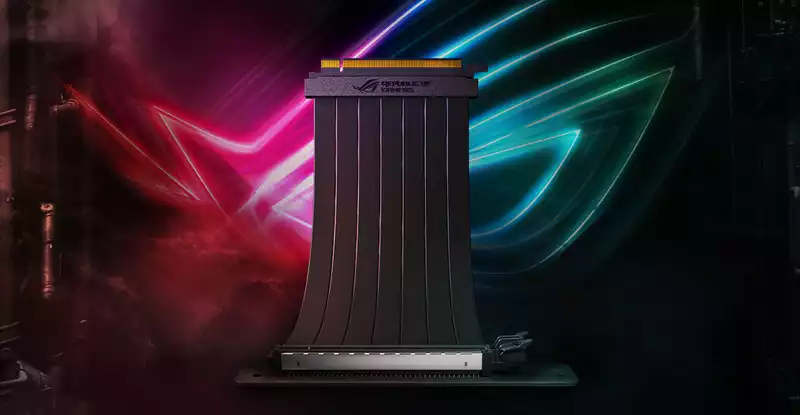Depending on the case you own, a PCI Express riser cable can allow you to mount your graphics card vertically and bring its fancy cooling shroud into full play. It's a great accessory, but is it worth the $59.99, and Asus seems to think so.
Asus just released the ROG Strix Riser Cable (RS200), available for pre-order on Amazon for exactly that price; it is scheduled to arrive on February 2 (Super Bowl Sunday), so if you order it, you should get it next week.
Value is somewhat subjective, but if you don't care about brand, you can get a PCIe riser cable for around $18 from an unknown company like EZDIY-FAB. Otherwise, Thermaltake riser cables are available for $24.62, which is less than half the price of the ROG Strix model.
These are not overly complicated products. One end plugs into the graphics card's PCIe connector, and the other end plugs into the motherboard's PCIe slot.
Asus claims a higher level of quality with its ROG Strix models, which use a patented "SafeSlot" design.
"Featuring a new manufacturing process that integrates reinforced metal and additional solder points, SafeSlot ensures a strong and stable graphics card connection," Asus explains.
It also provides EMI shielding, "corrosion resistance," and is 240 mm long. It also has the ROG logo and branding on one of the connectors, although it is harder to see when plugged into a PCIe slot.
There is no RBG lighting here, and PCIe 4.0 is not supported. This cable will work with AMD X570 motherboards (the only consumer chipset that supports PCIe 4.0), but Asus says that PCIe 3.0 must be selected in the BIOS before installation.
To be clear, I have not tested this cable, but I know enough about riser cables to say that $60 is a tough sell.


Comments